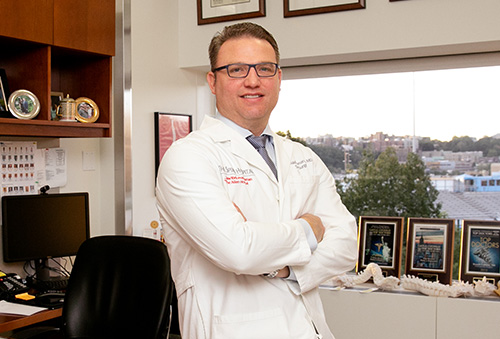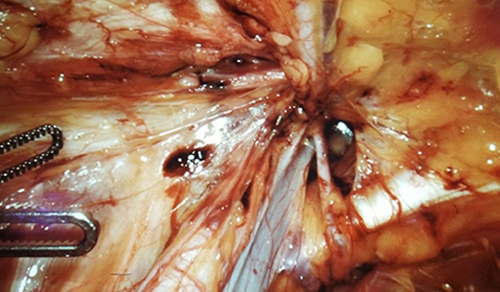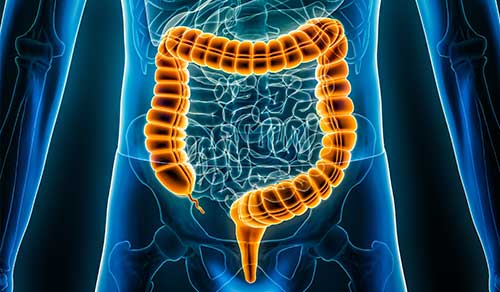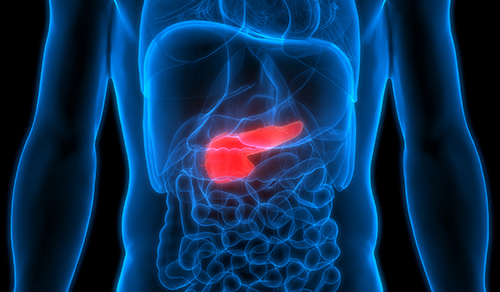Robotic Spine Surgery: Weighing the Benefits
Dr. Ronald Lehman
Robot-assisted spine surgery is on a trajectory towards automation utilizing the most advanced technologies,” says Ronald A. Lehman, Jr., MD, Chief of Spine Surgery and Director of the Robotic and Minimally Invasive Spine Program at NewYork-Presbyterian Och Spine. “While the evidence is building that robotics can safely achieve comparable outcomes to conventional approaches, larger, multicenter studies are needed to fill in the knowledge gaps and further validate its usage.”
In a comprehensive review initially published online in the September 6, 2021 issue of Spine Deformity, Columbia orthopedic spine surgeons evaluated the accuracy and benefit of computerized navigation and robotics for spinal deformity surgery, focusing on their impact on clinical outcomes. The evidence they uncovered suggests that computer-based navigation and robotic-assisted guidance systems for pedicle cannulation are “at least equivalent, and in several reports superior, to freehand techniques in terms of radiographic accuracy.” However, use of navigation or robotic techniques related to improved patient outcomes or decreased overall complications were not investigated directly.
The authors maintain that there are hypothetical advantages in terms of speed and accuracy for severe spinal deformity or complex revision cases, but studies are needed to further investigate this technology in these circumstances. To better understand the clinical outcomes and possible complications related to computer navigation and robotics for spine surgery, Columbia orthopedic spine surgeons have initiated and participated in several studies to determine variables that influence the decision to apply these advanced technologies.
A multicenter study led by Dr. Lehman and his colleagues at NewYork-Presbyterian Och Spine, examined the trends in outcomes and complications in 722 adult patients undergoing robot-assisted surgery between 2015 and 2019. The researchers focused on OR efficiency, complications, clinical outcomes, and other non-robot-related complications.
Patients were similar in total instrumented levels and pelvic fixation, with spondylolisthesis, degenerative disc disease, and degenerative scoliosis the most common diagnoses. Study findings revealed:
- Average robot time per screw decreased from 7.2 to 5.5 minutes
- Average fluoroscopy time per screw decreased from 15.2 seconds to 9.4 seconds
- Incidence of other intraoperative non-robot-related complications remained low consistently
- Length of stay declined by about 1 day
- 90-day reoperation rates did not change significantly
The results of their study, published in the September 2021 issue of The Spine Journal, demonstrated that use of robot screw accuracy, operative efficiency, reliability, and radiation exposure have improved significantly over the five-year period likely due to surgical expertise with robots and advances in robotic technology. The average length of stay remained significantly lower with time and the complication rates remained consistently low. The authors concluded that their findings validate the ongoing use of robot-assisted spine surgery.
Short Lumbar Fusion: Percutaneous versus Open Robot-Assisted Approaches
In a complementary study, orthopedic surgeons at NewYork-Presbyterian/Columbia served as principal investigators for a multicenter, multi-cohort study comparing percutaneous and open robot-assisted short lumbar fusion (1 and 2 levels). The researchers looked at robot time in minutes/screw, radiation exposure, robot abandonment, screw exchange for breach, and 90-day post-discharge outcomes.
This is the first and largest multicenter study to compare percutaneous and open approaches with robot-assisted platforms.
This study, which involved 310 adult patients with spondylolisthesis, degenerative disc disease, and spinal stenosis undergoing surgery between 2015 and 2019, showed that percutaneous screw placement has comparable outcomes to the robot-assisted open approach. Specific findings included:
- Operative time was longer in the open approach (198 minutes) versus the percutaneous group (167 minutes)
- Robot time per screw was similar between cohorts
- Fluoroscopy time per screw for the percutaneous group was longer than the open group
- Rates for screw exchange and robot abandonment were similar between groups
- 90-day complication rate and mean length of stay were not different between cohorts
While percutaneous robot-assisted spine surgery for short lumbar fusion can achieve a shorter operative time and lower risk for intraoperative blood loss requiring a blood transfusion, the significantly increased radiation exposure observed for the percutaneous cohort should be considered although this risk could be mitigated with increased experience with robot-assisted technology.
Read More
43. The trends in robot related complications, operative efficiency, radiation exposure, and clinical outcomes after robot-assisted spine surgery: a multicenter study of 722 patients and 5,005 screws from 2015 to 2019. Nathan J. Lee, Ian Buchanan, Scott L. Zuckerman, Eric Leung, Avery L. Buchholz, John Pollina, Ehsan Jazini, Colin M. Haines, Thomas C. Schuler, Asham Khan, Jeffrey P. Mullin, Christopher R. Good, Joseph M. Lombardi, Ronald A. Lehman. Proceedings of the 36th Annual Meeting of the North American Spine Society / The Spine Journal, Volume 21, Issue 9, Supplement, September 2021, Pages S21-S2.
What Is the Comparison in Robot Time per Screw, Radiation Exposure, Robot Abandonment, Screw Accuracy, and Clinical Outcomes Between Percutaneous and Open Robot-Assisted Short Lumbar Fusion?: A Multicenter, Propensity-Matched Analysis of 310 Patients. Lee NJ, Buchanan IA, Zuckermann SL, Boddapati V, Mathew J, Geiselmann M, Park PJ, Leung E, Buchholz AL, Khan A, Mullin J, Pollina J, Jazini E, Haines C, Schuler TC, Good CR, Lombardi JM, Lehman RA. Spine (Phila Pa 1976). 2022 Jan 1;47(1):42-48.
State of the art review of new technologies in spine deformity surgery-robotics and navigation. Sielatycki JA, Mitchell K, Leung E, Lehman RA. Spine Deformity. 2022 Jan;10(1):5-17. [Epub 2021 Sep 6]
Related Publications









